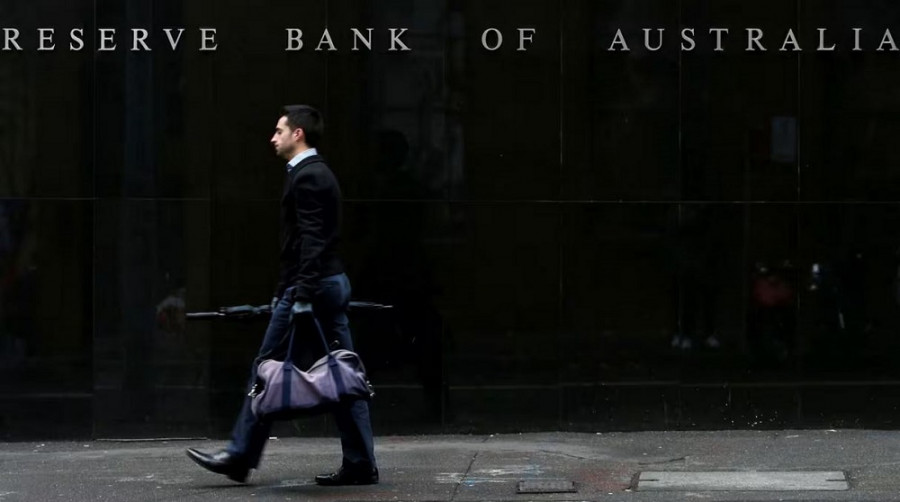The bulls were disappointed by the results of the Reserve Bank of Australia's October meeting. For the first time since October 2022, the pair tested the 0.62 level, reacting to the unfolding situation. Although the US dollar is the driving force behind the downward momentum, the aussie also had a hand on the downtrend. Contrary to expectations, the RBA did not announce an interest rate hike, which exerted downward pressure on the AUD/USD. Michelle Bullock, the new head of the central bank, continued the cautious policy of her predecessor. Despite the fairly sharp rise in August inflation, she did not rush to raise interest rates, indicating that she would not be in a hurry to implement additional rate hikes.

It's important to recall that Australia's Consumer Price Index unexpectedly rose to 5.2% in August. After several months of declining inflation, prices started accelerating again. This led to speculations that the RBA would adopt a more hawkish stance after its October meeting. However, most experts did not expect the central bank to raise interest rates this month. Quarterly data is needed for a complete picture, and it will only be published on October 25. Nevertheless, traders have hawkish expectations, at least in the context of anticipating verbal tightening from the RBA.
This didn't happen. The RBA kept the main wording of its accompanying statement unchanged, the central forecast is for CPI inflation to continue to decline and to be back within the target range in late 2025. The central bank stated that inflation in Australia had already peaked but remained too high and would stay that way "for some time." Although the RBA mentioned that future monetary tightening might be required "to achieve reasonable returns to the target inflation," this phrase was more of a routine nature. The Australian central bank maintained its wait-and-see position for the fourth consecutive time, with each time "warning" that it could tighten monetary policy if necessary.
In other words, the RBA wasn't overly concerned about the August CPI growth. The wording of the accompanying statement remained mostly unchanged, and the inflation forecast stayed the same. Contrary to expectations, the RBA was not on the aussie's side.
In turn, the Australian dollar lost ground at the most inopportune moment, just when its American counterpart started gaining momentum. Hawkish statements from some Federal Reserve officials (Mester, Bowman), the rise in the ISM Manufacturing Index (to 49 from a forecasted drop to 47.2), and the increase in 10-year Treasury yields (to 16-year highs) boosted the greenback. On Tuesday, the US Dollar Index approached the 107.00 level for the first time since November 2022.
Asian stock markets which closed mostly on the red on Tuesday, contributed to the corresponding fundamental picture. Mainland China and South Korea's stock exchanges were closed due to national holidays, while the Hang Seng Index in Hong Kong lost 3% during the day, dropping to an 11-month low. The Japanese Nikkei 225 index also declined (by 1.8%).
The current fundamental backdrop supports the bearish bias in the aussie's price. The RBA did not provide support to the Australian dollar, whereas the US dollar benefits from the support of several fundamental factors. The aussie has held its ground for many weeks, holding back the pressure from dollar bulls. This resilience was primarily due to hawkish expectations regarding the RBA's future course of actions (especially after the release of the inflation data for August). However, the aussie weakened after the RBA's cautious wording, after which the AUD/USD bears took control.
In my opinion, the downtrend will remain intact. Even if we look at the situation from a technical perspective, nothing can stop the pair from falling at least to the 0.6240 level. On all "higher" timeframes (from 4H and above), the pair is either on the lower Bollinger Bands line or between the middle and lower lines, indicating a bearish bias. On the 4-hour, daily, and weekly charts, the Ichimoku indicator has formed a bearish "Parade of Lines" signal. This similarly suggests bearish sentiment. The nearest and most significant support level is at the lower Bollinger Bands line on the weekly chart, which corresponds to the 0.6240 target.
The material has been provided by InstaForex Company - www.instaforex.comfrom Forex analysis review https://ift.tt/tZyskoH
via IFTTT
